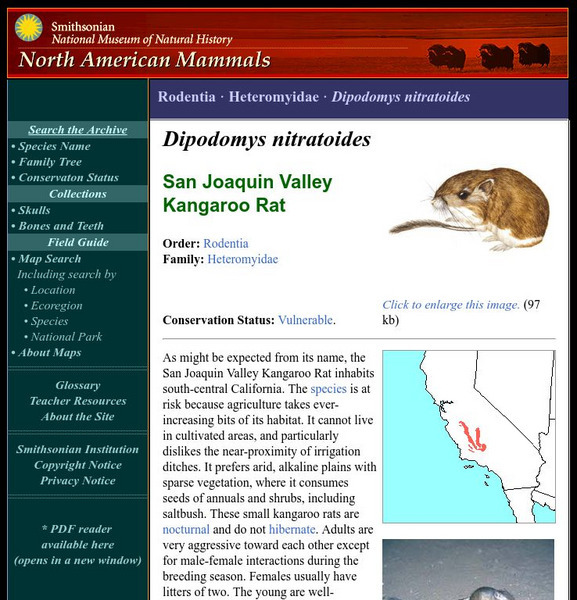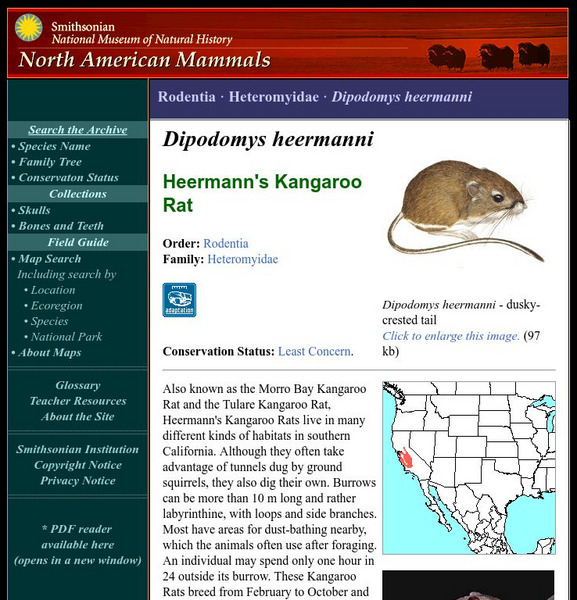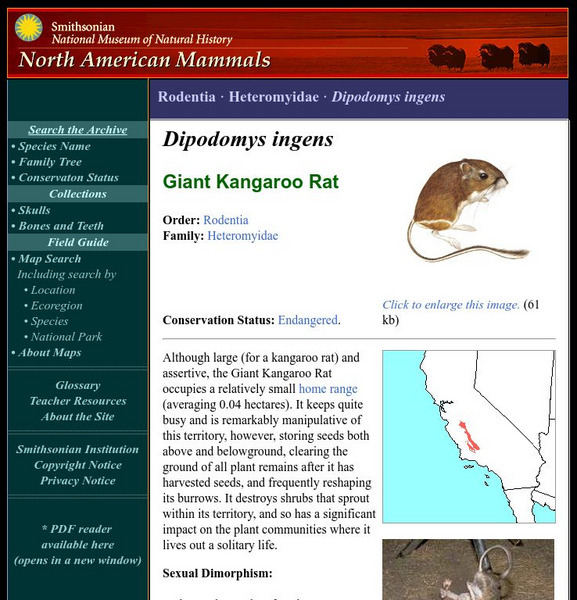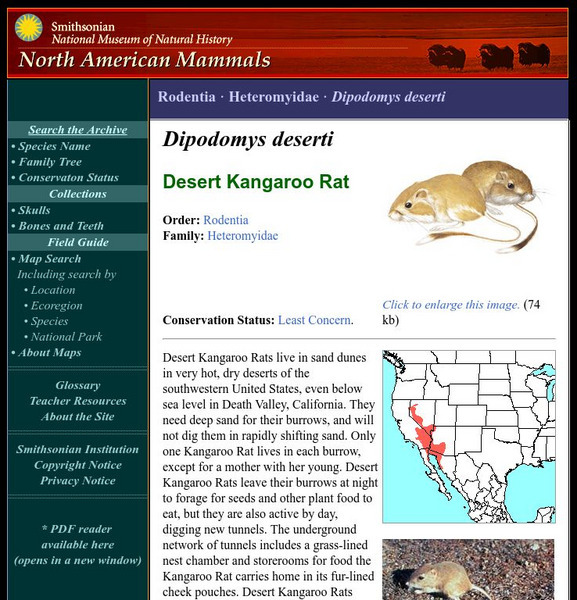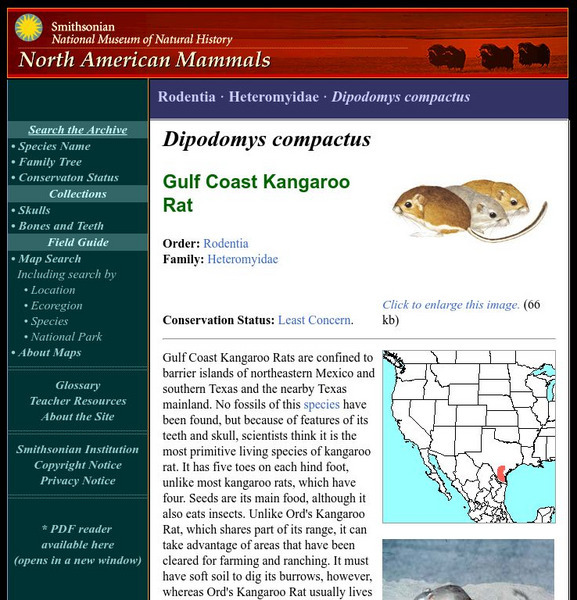Smithsonian Institution
National Museum of Natural History: American Mammals: Fresno Kangaroo Rat
As might be expected from its name, the Fresno Kangaroo Rat inhabits south-central California. The species is at risk because agriculture takes ever-increasing bits of its habitat. Learn more about the Dipodomys nitratoides, more...
Smithsonian Institution
National Museum of Natural History: American Mammals: Hispid Cotton Rat
The Hispid Cotton Rat's fur is sprinkled or streaked with blackish or dark brownish and grayish hairs. The Rats molt, losing and getting a new coat, three times in three months as they move through juvenile and subadult stages and into...
Smithsonian Institution
National Museum of Natural History: American Mammals: Heermann's Kangaroo Rat
Also known as the Morro Bay Kangaroo Rat and the Tulare Kangaroo Rat, Heermann's Kangaroo Rats live in many different kinds of habitats in southern California. Although they often take advantage of tunnels dug by ground squirrels, they...
Smithsonian Institution
National Museum of Natural History: American Mammals: Giant Kangaroo Rat
Although large (for a kangaroo rat) and assertive, the Giant Kangaroo Rat occupies a relatively small home range (averaging 0.04 hectares). Learn more about the Dipodomys ingens, more commonly known as a Giant Kangaroo Rat, in this...
Smithsonian Institution
National Museum of Natural History: American Mammals: Desert Kangaroo Rat
Desert Kangaroo Rats live in sand dunes in very hot, dry deserts of the southwestern United States, even below sea level in Death Valley, California. They need deep sand for their burrows, and will not dig them in rapidly shifting sand....
Smithsonian Institution
National Museum of Natural History: American Mammals: Gulf Coast Kangaroo Rat
Gulf Coast Kangaroo Rats are confined to barrier islands of northeastern Mexico and southern Texas and the nearby Texas mainland. No fossils of this species have been found, but because of features of its teeth and skull, scientists...
BiologyWise
Biology Wise: Anatomy of a Rat
Describes anatomical features of a rat that can be seen during a dissection, including external anatomy, glands in the neck region, organs in the abdominal cavity, and the urogenital system.
Smithsonian Institution
National Museum of Natural History: American Mammals: Eastern Woodrat
Eastern Woodrats are common in wooded areas with dense understories, in hedgerows, and in rocky outcrops. Their dens are occupied by a succession of individuals, each one adding more sticks and other material to the collection. Learn...
Smithsonian Institution
National Museum of Natural History: American Mammals: Dusky Footed Woodrat
Dusky-footed Woodrats, which are really very small rodents, build huge, elaborate houses of sticks. A house can measure more than a meter in diameter and be a meter high and one Woodrat may have as many as three houses. Learn more about...
Smithsonian Institution
National Museum of Natural History: American Mammals: Desert Woodrat
Desert Woodrats inhabit scrublands in desert and semi-desert areas. Unlike some other rodents living in regions with limited water resources, the Desert Woodrat does not have water-conserving physiological adaptations. Learn more about...
BiologyWise
Biology Wise: Circulatory System of a Rat
Describes the parts of a rat's circulatory system and how the blood circulates in a rat.
Other
Jane Cutler: Children's Author
If you are a student, this site has information about Jane Cutler, her books and some fun and games for you! Teachers, librarians and parents can also access information, study guides, and classroom uses for Jane's material.
